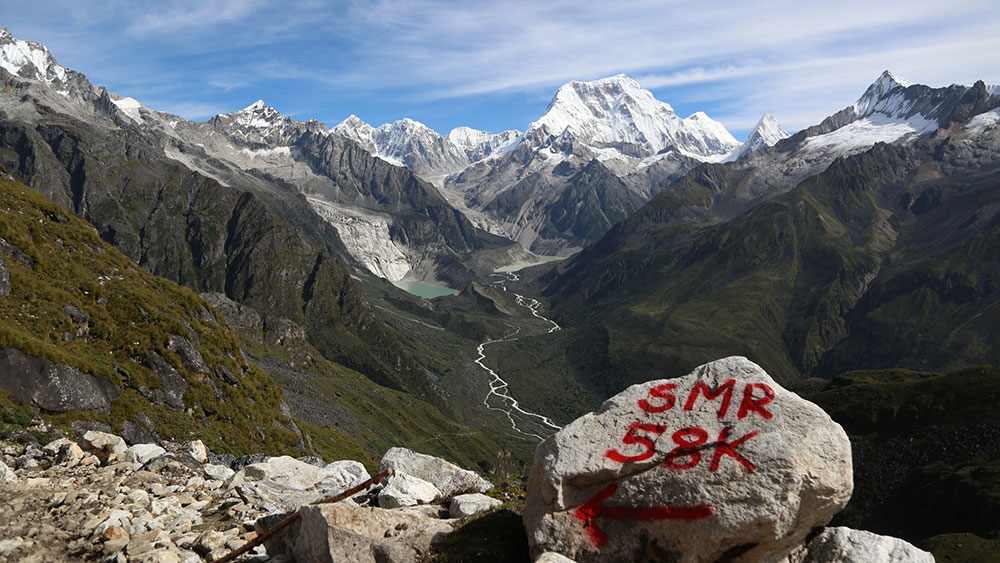“I am just a runner”. This was how 29 athletes started the 203-kilometre (125 miles) Snowman Race on October 13. Five days later, they found out that, in Bhutan, a run is not just a run. They were special guests in a special place and acclaimed as champions in the global fight against climate change.
Bhutan’s Snowman Race was destined to succeed. It was initiated by His Majesty The King who has trekked this unique trail five times and understands the terrain. On Royal command safety was the priority, with the professional production team supported by climate watchers, digital trackers, health workers, de-suups, soldiers, camp specialists, radio operators, time-keepers working round the clock. A race that veteran runners described as the most difficult ultramarathon on earth became a celebration.
The altitude of 5,470 metres is a new world record and the Himalayan trail tested the endurance of even mountaineers. The greatest challenges for international racers were the altitude and the rugged trail. Even veterans of mountain races around the world and conquerors of Mt. Everest trails underestimated the breathing conditions that are normal for Bhutanese highland communities. And runners, used to long but well-developed trails, had to negotiate knee-deep mud and irregular stepping stones which disrupted rhythm and required more focus than they had ever needed.
A total of 12 runners were either airlifted or helped back to the starting camp. While we will never get to hear all the stories of the five-day physical, mental, and psychological adventures, Bhutan seems to have re-defined ultramarathon running. The unanimous agreement among the runners was that the race itself was overshadowed by the Bhutanese experience.
One racer found that the Snowman Race was not a race but a cultural journey. They were cheered on by small communities in the middle of nowhere. Highlanders offered tea and biscuits to the runners who could not help but stop to thank them and who were moved to tears when even little children raised a “high five”. The race concluded with a two-day festival of food and entertainment by traditional dancers and students of the Bumthang valley.
The athletes explain that, in an ultramarathon, you are stripped of your ego and you wear only your emotions. It often changes a person. The 20 accomplished international athletes, from diverse backgrounds, have been running all their lives. They are usually described as the strongest and fittest even among professional athletes. They are used to brutal physical conditions and are at home in the wilderness.
In this race they share the trail with Bhutanese highlanders who also share all these traits, the difference being that they trek and run for their daily needs, not to race. Herders have their own heroes and legends of superhuman feats, out of necessity. This is inevitable when it is an eight-day trek to shop for essentials, weather permitting.
The Snowman Race will be a regular event – a trial of strength with a message for humanity. The question that is on the minds of highlanders, the Bhutanese population, and the runners – what is the significance of the Snowman Race?
A Climate Action Conclave after the race to discuss this question raised a number of issues. This is not a good time in the world. The Snowman Race is an analogy to draw a parallel with the Climate Change crisis. The global response to the climate predicament is too little too slow. The planet is threatened and humanity must move much faster. That is why it is not a Snowman Trek; it is a Snowman Race.
This parallel shows that Bhutan has come a long way in organising global events, spurred by visionary ideas. Just as the runners are stripped of all pretenses as they seek their limits we look at the real impact of climate change on the land and people. A number of runners saw huge chunks of glaciers reduced to small ponds. Several athletes said they had never seen so many landslides. They found all city roads and rural roads in Bhutan prone to frequent damage.
In an inaugural address to the Climate Action Conclave after the race, Her Majesty The Gyaltsuen said that remote communities contribute the least to climate change but are the first to suffer the impact. Bhutanese explained how their seasonal lifestyle has been affected, with dry spells when they need rain and torrents that destroy their harvest. It is not fair that the overtly material lifestyles of the wealthy results in the agony of the poor but that is the reality. Countries will continue to be devastated by natural disasters and Bhutanese scientists predict that the worst glacial floods are yet to come.
One athlete described the melting glaciers as “so much terror with so much beauty”. Indeed, this is the real dilemma Bhutan faces. And Bhutanese have to also ask difficult questions. As experiences elsewhere show, do we need to lose what we have to appreciate them? This applies especially to our cultural and environmental heritage.
It becomes a hypocrisy when we point out the fault in others and do the same ourselves. We claim to live in harmony with nature but the trash all over the country tells a different story. Even beautiful Lunana is being polluted with plastic bottles, baby pampers, and other waste as the cordyceps bring Lunaps new purchasing power but they have no clue about garbage disposal. As Bhutanese aim to raise the standard of living many of our standards remain low.
A number of participants at the Climate Action Conclave were reminded of another discouraging reality. The hundreds of meetings, thousands of documents, innumerous ideas shared have not helped improve the situation. We are heading for COP 27 with more statements and better speeches. But the actual situation will change only if the minds, attitudes, and values of people change.
The world needs challenges like the Snowman Race.
Contributed by
Dasho Kinley Dorji


